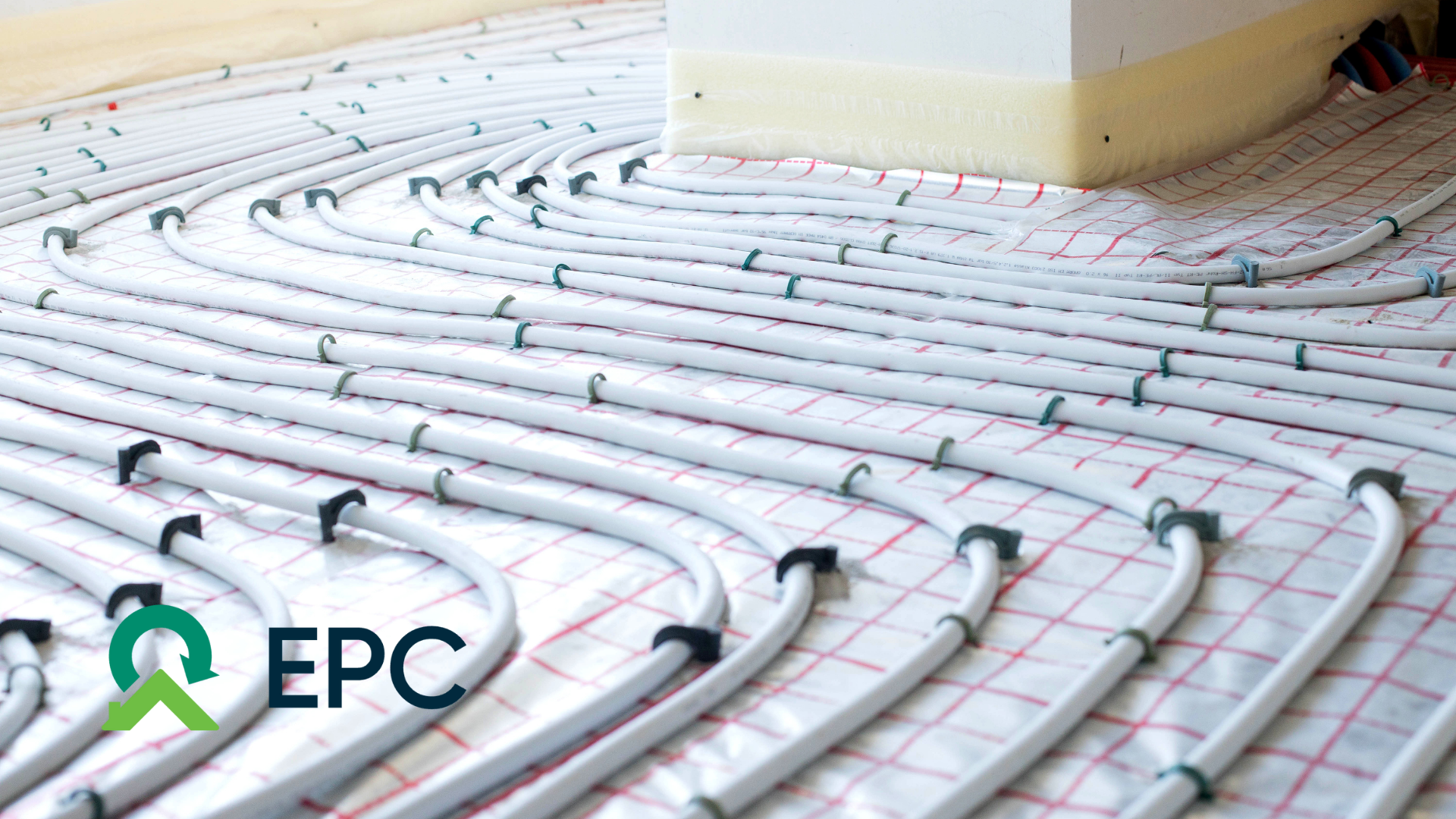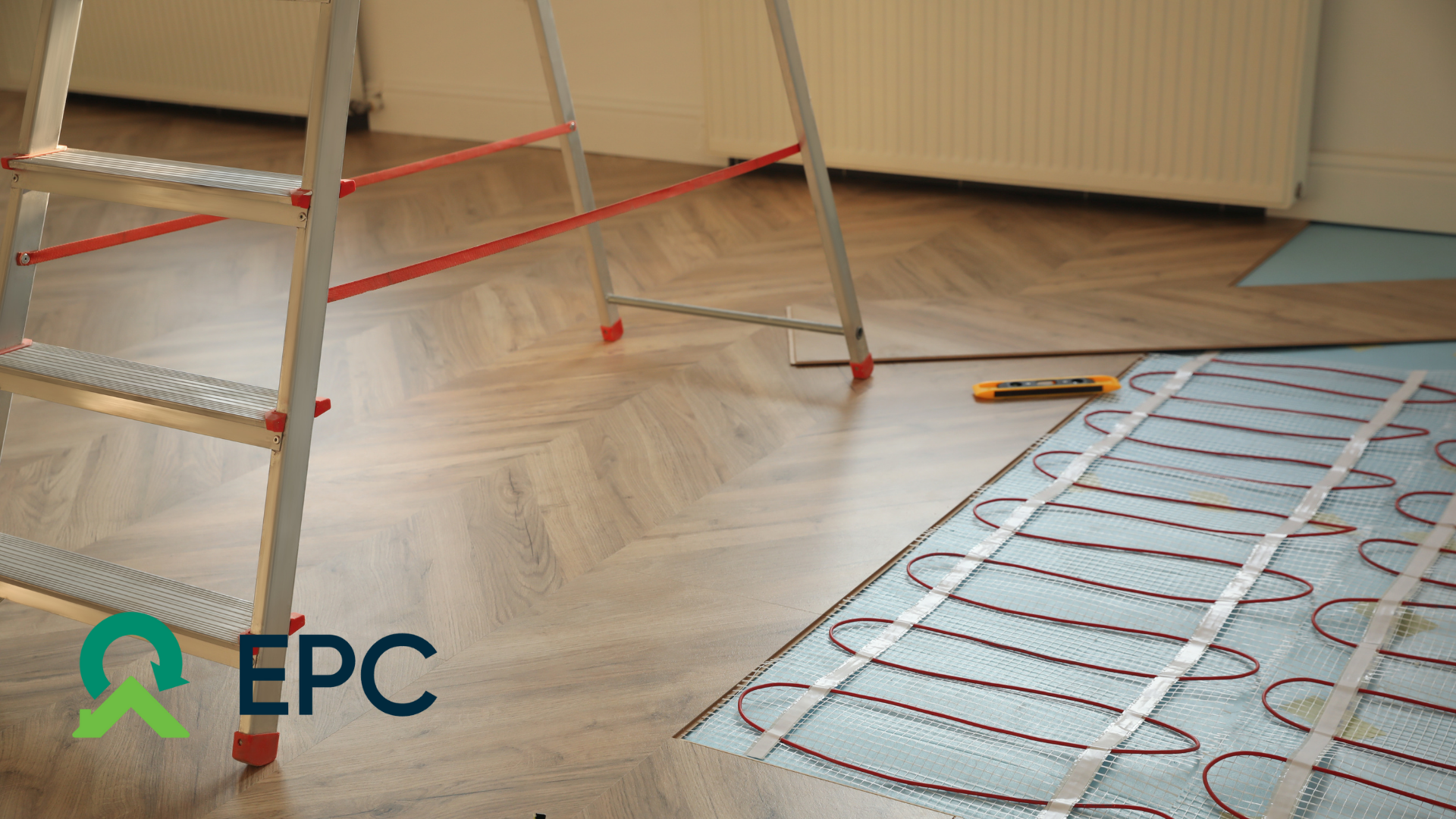:quality(75))
Imagine heading downstairs on a winter’s morning and stepping onto a warm, heated floor. It sounds like a dream reserved for the mansion-owning elite of Beverly Hills, right? Well, not quite. Underfloor heating is now a luxury accessible to many Essex homeowners.
The best part is, underfloor heating is compatible with renewable heat sources like heat pumps. This makes it an environmentally friendly option for your home. But how does underfloor heating work?
In this article, we’ll answer that question, as well as discussing the advantages and disadvantages of the different types of underfloor heating.
What is Underfloor Heating?
Underfloor heating is a system installed underneath your floorboards. It can warm an entire room by radiating the heat upwards, rather than from the side like a traditional radiator system. It is regarded as a more effective method of heating a room as it doesn’t leave any cold spots like radiators do.
Underfloor heating is an ideal option for self-build homes, as the complete floor structure will be available to installers. This allows for better integration and better zoning, which essentially means you’ll be getting a perfectly optimised system.
Wanting to retrofit your home? Underfloor heating is still a viable option. The floor will have to be pulled up and there will be a slight elevation change, but no major structural changes will be required.
How Does Underfloor Heating Work?
Underfloor heating systems work in one of two ways. There’s wet systems and dry systems, which both have advantages and disadvantages. Let’s start with explaining how a wet system underfloor heating works.
Wet systems

Wet systems, also known as hydronic heating systems, work by circulating warm water through pipes installed under your floor. This water comes from a heat source, which will either be a boiler or its environmentally-friendly alternative, the heat pump.
The flow of the water from the heat source is controlled by a manifold, which transfers it through the underfloor pipes. From here, your floor will start to heat up, radiating the warmth upwards and providing heat to your room.
Advantages
Low running costs: Wet systems are generally efficient and cheap to run, especially when you have a heat pump supplying the hot water. This allows you to heat large areas without having to worry about a huge energy bill.
Even heating: The distribution of pipes under the floor makes for even heating across the room. A major issue with radiators is their propensity to leave cold spots around the room.
Environmentally friendly: When paired with a heat pump, your wet underfloor heating system won’t require the use of any fossil fuels. Instead, your water will have been heated using the natural warmth in the air.
Disadvantages
Longer installation time: Installing wet underfloor heating systems is not a simple task. It is labour intensive and will require your flooring to be removed. This unfortunately adds to the cost of installation.
Slower heating times: Because they heat larger areas by warming up pipes, your floor won’t be heated instantly. This means it will take longer for the room to warm up than if you were using radiators or an electric system.
Electric system

Instead of using pipes and water to heat your floor, electric systems rely on thin wires or a mat. When turned on, electricity flows through the wires, generating heat and warming up the floor. A consistent heat will then rise from the floor and heat up the room.
Once again, the heat provided by the electric system is capable of heating up an entire room, leaving no cold spots. As these systems rely on electricity, they are more expensive to run than their wet alternative.
Advantages
Consistent heat: Electric systems produce consistent heat levels that can be easily controlled by the system. This heat will warm up the room in an even manner.
Low maintenance: Electric underfloor heating systems don’t tend to require a lot of maintenance. They will continue to operate for many years once installed, often without a hitch.
Versatile: Electric systems are compatible with multiple types of floor coverings. These include carpet, wood, and tiles.
Disadvantages
Expensive to run: If you don’t have any form of renewable energy supply such as solar panels, electric systems will raise your energy bills. It is a much more expensive equivalent to the wet system.
Potential hot spots: If you fail to choose an adequate installer, there is a risk of hot spots developing within the system. This can leave the temperature of your room inconsistent in places.
Increased floor height: The insulation boards that are part of the installation can result in an increased floor height within the room.
EPC | Expert Underfloor Heating Installer Essex
Efficient underfloor heating by MCS Certified installers
Whether you're retrofitting your current home or planning a self-build property, underfloor heating is an ideal option. EPC delivers premium quality underfloor heating installations to suit you, designing bespoke systems to fit your home and budget.
Plus, we can integrate renewable energy sources like heat pumps into your system, to help you save a fortune and lower your carbon footprint.
Get in touch with us today to see how we can help you revolutionise your home.